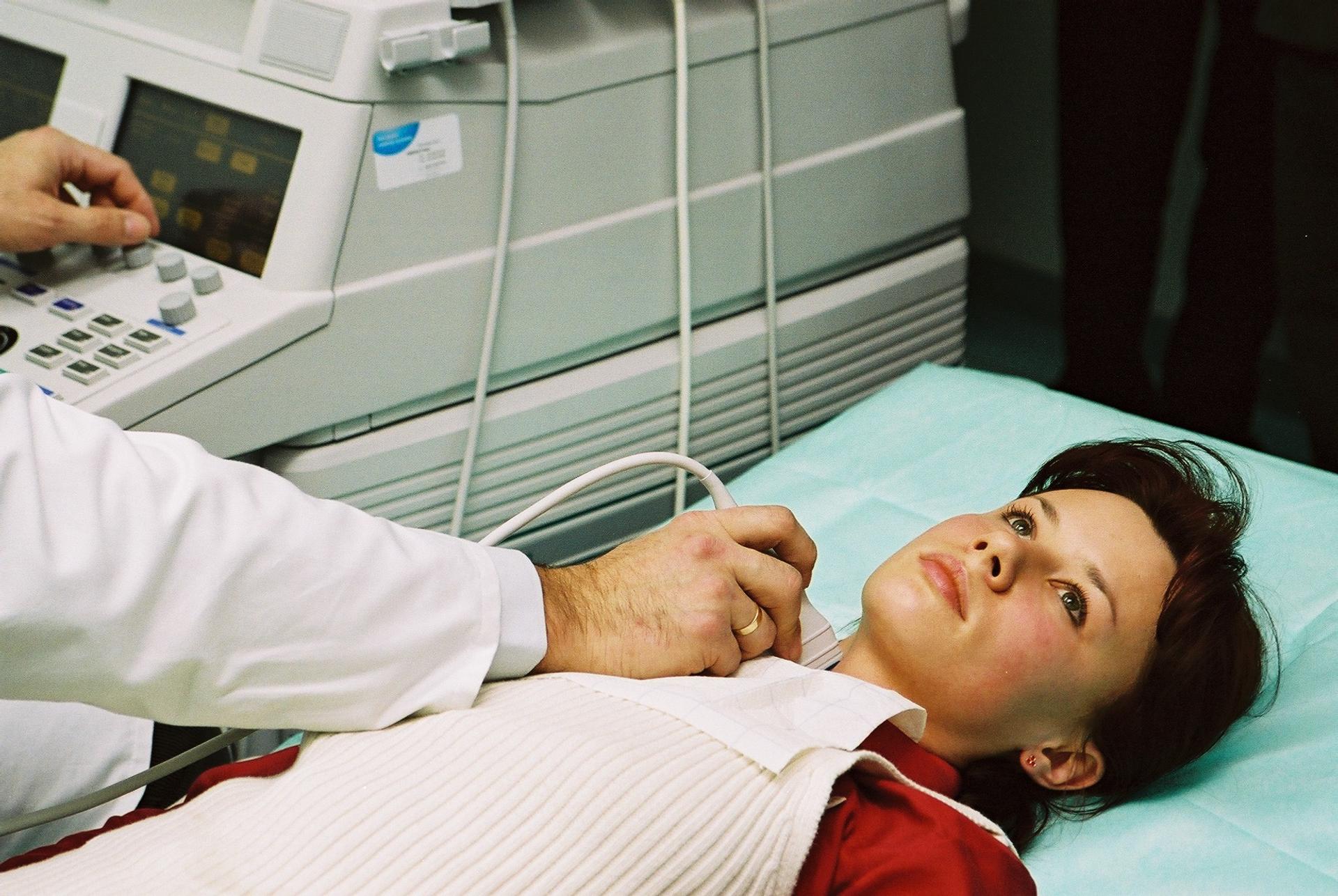Occupational Guide: Ultrasound Technologist
March 19, 2018
For those looking to start a career or find a new one, the healthcare industry is enormously appealing. With its flexibility, impact on lives, and continuing growth, it’s an industry which is incredibly attractive to people throughout the country.
However, the prospect of going to medical school is a daunting task for many. What most people don’t realize though, is they have access to fast-growing, high paying careers without ever going to medical school.
Ultrasound technologist (also known as diagnostic medical sonographer) careers are both in-demand and high-paying. If you’re looking for a fabulous way to get into the healthcare field without years of medical school, signing up for a diagnostic sonography program is an amazing opportunity to jumpstart your career. In this step-by-step guide, we’ll show you why being an ultrasound tech is the right choice for those looking to make a difference.
What Is Diagnostic Ultrasound Technology?
If you’re thinking about a job in this field, then you probably want to know what it is first. Consider it a way to see through your body and get a view of your insides, much like a superhero. However, instead of it being “x-ray vision,” it’s “sound wave vision.”
Ultrasounds use sound waves to see inside the human body and help diagnose many important medical issues. The most wonderful news about this technology is that sound waves are much safer for both patient and healthcare professional.
At first, you might think this is a loud job where you have to go around wearing ear protection, but this couldn’t be farther from the truth. Since ultrasounds are high-frequency waves, they are above the limits of our hearing. Operating at 20,000 Hz or above, this means that humans can’t hear them, nor can human hearing be damaged by them.
How Ultrasound Looks into the Body

Image by MedicalPrudens from Pixabay
Maybe you know how sonar for naval ships works. When sound waves are emitted, they bounce off an object and return, when they are measured. These measurements are used to determine size, shape, and distance of objects in the ocean.
Sonar and ultrasound are similar in the way in which they work, but the frequencies they use are at two ends of the spectrum. Sonar uses low-frequency sound waves while ultrasound uses high. The reason for this is that low-frequency waves travel much further distances than high.
If you’re trying to reach through the ocean to “see” something, you’ll want the sound to travel a long way. When imaging a human, you only need to travel a short distance. Generally, it’s just a few inches, allowing high frequencies to be used without losing any precision.
Another difference is that sonar determines the outside shape of an object, while ultrasounds look into a body. Not only that, but they need to determine what is being seen - fluids, bones, muscles, and organs. To generate these images, they place gel on the area specified for imaging, use the wand on this area, and the wand sends high frequencies through your body.
Diagnostic Medical Sonography Program
A Type of Ultrasound for Every Task
It may sound like ultrasound technologists only use one sound wave at one single frequency, but it’s much more complex than that. Different frequencies are used for various imaging studies to create an accurate picture of whatever body part the doctor wishes to see.
What Does Ultrasound Technology Do?
Ultrasound technology is used to monitor and diagnose patients in a number of ways. It can be used to diagnose cancer by looking at breast and other tissue to measure stiffness and characterize lumps. It’s also used to investigate blood flow and watch for blockages and other conditions. The truly awe-inspiring part of this is that all of these tests are (usually) achieved with just one machine, which means in a single day, you may actually end up performing many types of tests.
Now that you know a little bit about the testing performed, you may be curious about some terminology you’ve heard before.
Sonogram vs Ultrasound: Related But Not the Same
Many are confused by the terms sonogram and ultrasound. Both are associated with the same procedure, but that doesn’t mean they’re the same thing.
When someone places gel on the body part being tested and uses the instrumentation on you, that procedure is called an ultrasound. A sonogram, however, is the image that’s produced when an ultrasound is performed.
What Does an Ultrasound Tech Do?

Photo by pressfoto
Now that you’re familiar with what an ultrasound is and what it’s used for, you may be wondering what an ultrasound techs’ job entails.
Hours of Work
The working week for an ultrasound technologist is typically full-time, or around 40 hours. This is due to the fact that it’s such an in-demand field. Though there is a need for full-time workers, a wealth of part-time and per diem positions also exist. If your preference is to work part-time, however, you many have to work weekends, holidays, or nights in exchange for this flexibility.
Where You Can Work
Employers and workplaces can be very diverse in this industry. Overall, you’re likely to work in places similar to many other allied healthcare professionals. Ultrasound techs frequently find work in hospitals, doctor’s offices, outpatient facilities, and imaging centers.
The assortment of facilities to work at means you’re not limited to one type of workplace. It also means you’re free to find a work site that offers hours, benefits, and an environment suited to your needs.
Working Environment

Photo by Tomasz Kobosz from FreeImages
The day-to-day for an ultrasound technologist is pretty much the same wherever they work. That’s because, regardless of the patient and the testing, the technology itself is virtually the same. Sure, hospitals and imaging centers tend to be fast-paced compared to a more laidback physician’s office, but the job itself doesn’t change much.
Your patients will change the most, depending on location, and with it, your bedside manner. In a children’s hospital, you may be comforting a scared child while conducting your testing. Working in a hospital may mean that you have patients who are in pain and need your reassurance.
An Ordinary Patient Encounter
An appointment often follows the same pattern. After introducing yourself, you’ll explain what the patient can expect. From there, you’ll get your patient settled and prepare your work area by arranging towels and applying gel in the area where you’ll use the wand. You’ll use your machine to create images which commonly go to a radiologist or physician who reads them.
You’ll be happy to know this job tends to be low-stress and high reward. Compared to many other allied health careers, ultrasound techs tend to have a less stressful environment.
It's not uncommon for them to work one-on-one with their patients in a quiet, dark room. However, depending on where you work, you may have to move from room to room with you ultrasound equipment.
Ultrasound Tech Salary
.jpg)
Photo by Karolina Grabowska from Pexels
Not only is this career relatively stress-free, but it also pays pretty well too. According to the Bureau of Labor Statistics, the median salary in 2016 was $69,650. That’s more than $30 per hour, making it one of the highest paid careers in the allied healthcare field. By comparison, many other allied healthcare workers make somewhere around $37,000 per year.
Not only isthis career low stress and well-compensated, but it’s also in demand.
Demand Continues to Grow
If you’re looking for job security, then you’re in the right place. Ultrasound technology is expected to have a 23% growth rate from 2016 to 2026. In contrast, all other U.S. occupations are only expected to have a 7% increase in demand. With such a great outlook, it makes you want to run out and sign up for ultrasound school, doesn’t it?
Steps to Becoming an Ultrasound Technologist
To become an ultrasound tech, you’ll need the proper education to get started. Unlike most careers in allied health, it's a bit harder to join a good ultrasound tech program. To enroll in a CAAHEP-accredited program, you’ll need several college-level courses or their equivalents.These can include:
- Anatomy & Physiology
- College-level Math
- Radiographic Physics or General Physics.
- English or Communications
Luckily, these courses can be completed easily and for relatively little money at a local community college. It's also helpful if you’ve completed a university-based science degree in the past. Otherwise, the process to apply to an accredited ultrasound tech program is fairly straight forward.
How to be Competitive with Your Application
As we mentioned before, this program tends to be highly competitive, and any edge you can gain will help you rise to the top of the acceptance list. If you have prior medical experience and/or certifications (such as being a certified medical assistant or holding an associate’s degree), they should help you during the application process.
One key decision you need to make is to figure out what type of program is best for you. There are both degree and certificate programs, each boasting its own pros and cons. For more info be sure to check out our article about the differences between sonography certificate and degree programs.
After you’re accepted, most accredited programs take anywhere from two to three years to finish. In addition to classroom time, the training includes clinical experience and hands-on training in the form of an internship.
Ultrasound Technology Certification

Image by Maura Barbulescu from Pixabay
Students enrolled in a CAAHEP accredited sonography program are eligible for certification exams offered by the American Registry for Diagnostic Medical Sonography (ARDMS). In addition to the Sonography Principles and Instrumentation (SPI) exam, sonography students usually take the Abdomen (AB) exam and/or the Obstetrics and Gynecology (OB/GYN) exam.
Passing these exams affords an individual the ability to become a Registered Diagnostic Medical Sonographer (RDMS), which allows for better job opportunities. Please note that many institutions will only hire certified ultrasound techs, so it’s advantageous to have one or more of these certifications.
Find a Great Ultrasound School in Your Area
You may have more questions about whether ultrasound is the right field for you. Maybe you’re wondering what the best school in your area is. Your local admissions specialist is available to help you make the best decisions to achieve your goals.
If you’re in the New Jersey area, learn more about our ultrasound technologist program today!
Diagnostic Medical Sonography Program

